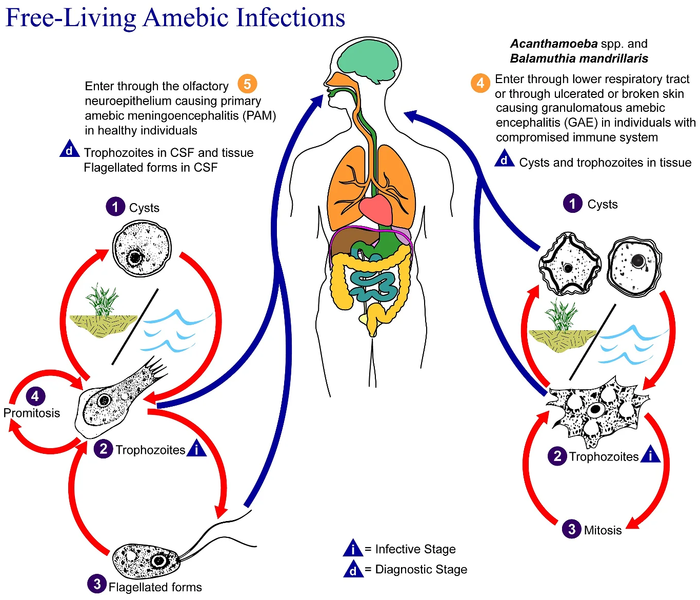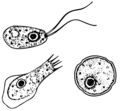Fájl:Free-living amebic infections.png

Az előnézet mérete: 700 × 600 képpont További felbontások: 280 × 240 képpont | 560 × 480 képpont | 896 × 768 képpont | 1 195 × 1 024 képpont | 1 365 × 1 170 képpont.
Eredeti fájl (1 365 × 1 170 képpont, fájlméret: 715 KB, MIME-típus: image/png)
Fájltörténet
Kattints egy időpontra, hogy a fájl akkori állapotát láthasd.
| Dátum/idő | Bélyegkép | Felbontás | Feltöltő | Megjegyzés | |
|---|---|---|---|---|---|
| aktuális | 2023. február 2., 11:24 |  | 1 365 × 1 170 (715 KB) | Materialscientist | https://answersingenesis.org/biology/microbiology/the-genesis-of-brain-eating-amoeba/ |
| 2008. július 20., 08:30 |  | 518 × 435 (31 KB) | Optigan13 | {{Information |Description={{en|This is an illustration of the life cycle of the parasitic agents responsible for causing “free-living” amebic infections. For a complete description of the life cycle of these parasites, select the link below the image |
Fájlhasználat
Ezt a fájlt nem használja egyetlen lap sem.
Globális fájlhasználat
A következő wikik használják ezt a fájlt:
- Használata itt: de.wikibooks.org
- Használata itt: en.wiktionary.org
- Használata itt: fi.wikipedia.org
- Használata itt: fr.wikipedia.org
- Használata itt: gl.wikipedia.org
- Használata itt: hr.wikipedia.org
- Használata itt: is.wikipedia.org
- Használata itt: it.wikipedia.org
- Használata itt: pl.wikipedia.org
- Használata itt: te.wikipedia.org
- Használata itt: vi.wikipedia.org
- Használata itt: www.wikidata.org
- Használata itt: zh.wikipedia.org



